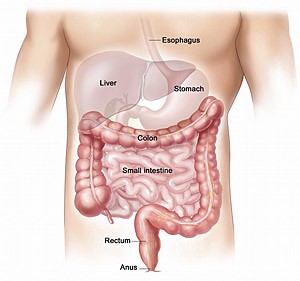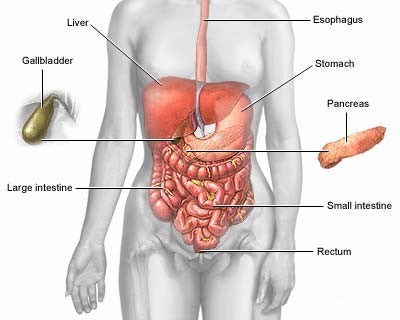How Does Digestive System Work?

How does digestive system work? This question is often asked by those who are suffering from some type of problem with their digestive functions.
It may be heartburn, bloating, upset stomach, constipation, or diarrhea, as these are the most common concerns.
While quite elementary, digestive functions can, in fact, be complex. First off, you need to understand what digestion is, as well as the body parts involved in this process.
Digestion is the process by which food and drinks are broken down into smaller pieces so that they can be used to build cells, nourish tissues, and provide energy at the same time.
The human digestive system involves a group of organs that utilize mechanical and chemical means to allow the body to take in food, break the food down, extract nutrients from those food, and eliminate waste products in the form of urine and feces.
How does digestive system work in our body? The digestive system actually has what is called a digestive tract. Think of the digestive tract like a train track with stops along the way.
The main digestive organs are the mouth, the esophagus, the stomach, the small intestine and the large intestine. The digestive tract also contains a layer of smooth muscles that helps break down food and move it along the tract.
Here's what happens as these organs break down the food you consume in a day. Let's start with the function of the mouth. The mouth takes in food, and it is where digestion begins. Your saliva starts to work on the food first by producing particular enzymes that start the digestive process.
The esophagus seems to have only one important function in the body and that is to carry food, liquid, and saliva from the mouth to the stomach.
The stomach is the next in line of the digestive functions. The stomach produces acid and more enzymes to continue the break down of the food. Gradually, the stomach allows the food to be pushed into the small intestines.
It is in the small intestine that the extensive part of digestion occurs. Other organs get involved here, the pancreas, the liver, and the gall bladder. The pancreas sends more enzymes, and the liver and gall bladder produce bile to send to the intestines to help deal with the fat in our food.
During this part of the digestive functions the body absorbs the majority of the vitamins, minerals, and nutrients it needs into the blood stream through the walls of the small intestines.
Finally, it is the large intestine that reabsorbs water and maintains the fluid balance of the body while processing indigestible material and sending down through the rectum for elimination.
These digestive system pictures can help you see and understand the structure and multifaceted processes.

Tips To Maintain Healthy Digestive Functions:
- Chew your food thoroughly. By chewing slowly instead of gulping down your food, you can crush your food to pieces and allow the saliva enzymes more time to work before moving food on to the next stop in the digestive tract.
- Eat "good" food. Try to eat more food that is less processed and less food that is processed. You get the most nutrition from foods in their natural state.
- Cleanse the digestive tract regularly. Because your body absorbs most of it's needed nutrition through the intestinal walls, you want to keep those walls clear of waste build up. I regularly cleanse my digestive system withHerbal Fiberblend. It's natural, safe, and gentle, but very effective.
- Drink plenty of water. With all the other beverages we have available these days, too many of us fail to drink the needed amount of water each day. Try swapping out water for half of your fluid intake each day. It's a great way to start improving your water intake and benefiting your digestive functions.
How does digestive system work? It's a masterpiece of engineering designed to supply your body with the nutrients it needs to survive, that's for sure.
As such, it pays to take care of the digestive system by eating right, drinking plenty of water, exercising regularly, and being alert of digestive issues that do not seem to go away.
From How Does Digestive System Work to Human Digestive System
From How Does Digestive System Work to All About Parasites Homepage








New! Comments
Have your say about what you just read! Leave us a comment in the box below.